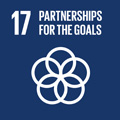- Docente: Stefania Sarno
- Credits: 6
- SSD: BIO/08
- Language: Italian
- Moduli: Stefania Sarno (Modulo 1) Cristina Giuliani (Modulo 2)
- Teaching Mode: Traditional lectures (Modulo 1) Traditional lectures (Modulo 2)
- Campus: Bologna
- Corso: Second cycle degree programme (LM) in Biodiversity and Evolution (cod. 5824)
-
from Apr 23, 2025 to Jun 04, 2025
-
from Feb 24, 2025 to Apr 10, 2025
Learning outcomes
At the end of the course, students will acquire theoretical and methodological knowledge about the main applications of molecular biology in forensic sciences. In particular, students will learn and apply molecular methods (based on DNA, RNA, protein analysis) for the identification of biological specimens, for personal identification and ancestry reconstruction, for parentage testing, and for the prediction of physical characteristics (such as eye, hair and skin color, craniofacial morphology, etc.). Students will also acquire practical skills on the main statistical and bioinformatical methods of data analysis.
Course contents
The course contents will be organized according to the following topics:
- Human genetic variability
- Analysis of biological samples from different specimens
- Molecular anthropology techniques for the analysis of genetic markers and DNA polymorphisms (autosomal DNA, Y- and X-chromosome, mitochondrial DNA)
- Statistical methods in genetic and forensic analysis
- DNA databases used in forensic and population genetics
- Personal identification and reconstruction of biogeographical ancestry
- Prediction of phenotypic traits based on genetic data
- Application of human epigenetic variability in forensics
Readings/Bibliography
The slides of the lecturers will be provided during the course. Additional readings will be suggested from scientific research articles or from some chapters of the following book: “Forensic DNA Applications: An Interdisciplinary Perspective” (2014), Edited by Dragan Primorac and Moses Schanfield. CRC Press, Taylor Francis Group.
Teaching methods
The course consists of two parts:
Module1: lectures (3 CFU, 24 hours)
Module2: lectures (1 CFU, 8 hours), in-silico exercises (1 CFU, 10 hours), laboratory activities (1 CFU, 12 hours).
According to this typology of activities, in order to follow such a course the students should have attended Module 1 and 2 (e-learning) and Module 3 for specific training on safety and health at study locations.
Information about Module 1 and 2 are available at: https://www.unibo.it/it/servizi-e-opportunita/salute-e-assistenza/salute-e-sicurezza/sicurezza-e-salute-nei-luoghi-di-studio-e-tirocinio
Information about dates and modes of Module 3 are available at the web page of the Second Cycle Degree in Biodiversity and Evolution.
Assessment methods
Written test including a combination of multiple-choice and open questions, based on all topics covered during the course.
Teaching tools
PPT slides of the course, computer exercises and laboratory activities.
Office hours
See the website of Stefania Sarno
See the website of Cristina Giuliani
SDGs


This teaching activity contributes to the achievement of the Sustainable Development Goals of the UN 2030 Agenda.
